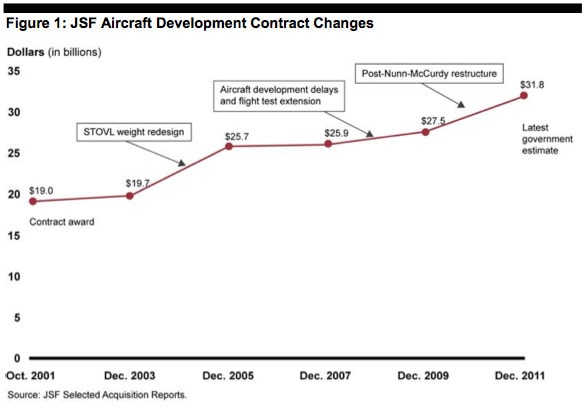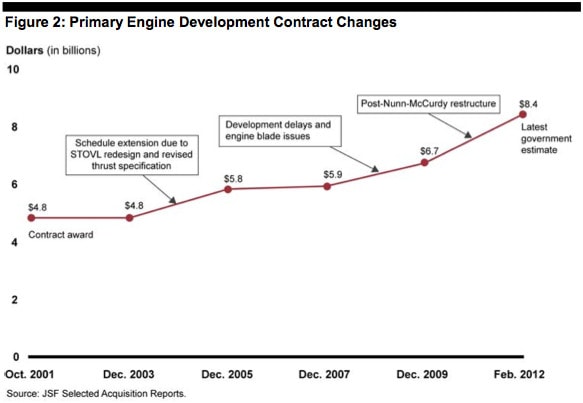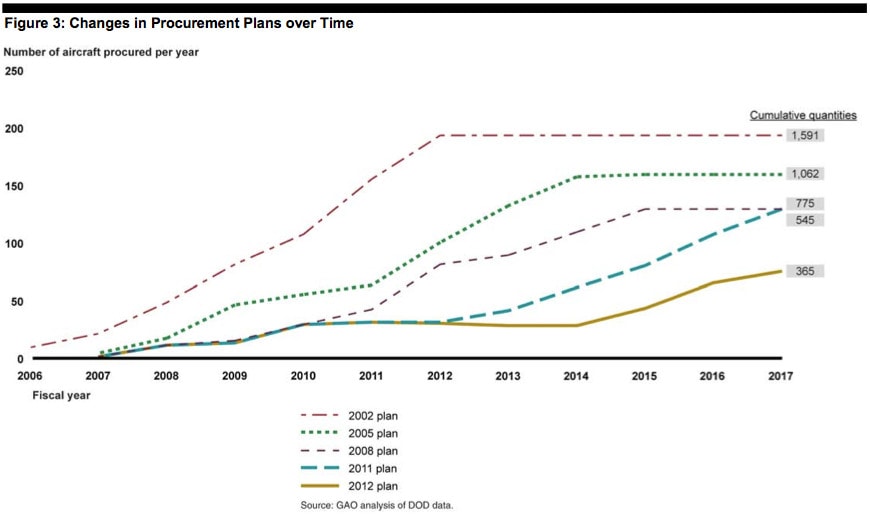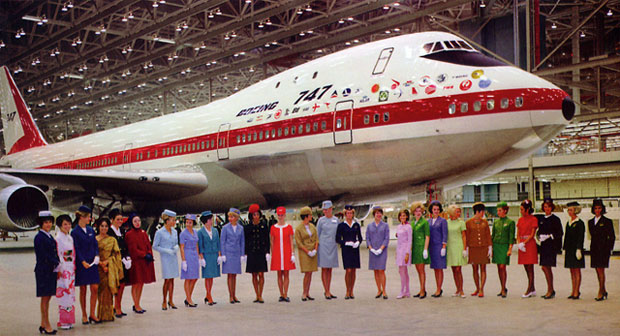In the final article of the JSF posts series (Part I, Part II) I want to talk about (sorry this post is a little bit arid 🙂 ):
- Lessons learned and the positives risks of hte JSF competition program.
- A few details of the ongoing F35 procurement plan, extracted of the US Congress’ Government Accountability Office (GAO) JSF Report issued on June 2012.
- The software growth on the F35 program. And a little pill about the C++ coding guide for the aircraft computers.
Lessons learned

Dilbert.com copyright.
Always from every project (succesful or not) the project’s team extract a very useful lessons learned for the future. Let’s see some of them.
- Boeing lost the JSF competition, but not to be selected for the development of the JSF, Boeing viewed its involvement in the competition as a strategic investment. The program yielded many advances in stealth technology and design and manufacturing methods. These achievements have been applied to other Boeing programs including the F 18/E F Superhornet and the X-45A Unmanned Combat Air Vehicle, or UCAV. The US Government cutted dramatically the F35 procurement and increases a lot the UCAV procurement, and who is one of the main contractors is…. Boeing. As the documentary said. “Losing the battle of the X-planes may not mean losing the war to dominate the future of American air power.“
- From succesful previous projects, Lockheed Martin used all his knowledge about stealth with the F117 and the new fighters capabilities from the F22 Raptor, without them, the F35 probably would never developed.
- And mentioned on Part II post, Lockheed had serious problems with the subcontracted bulkhead titanium construction, it was not very take on count and they confided in the contractor. Rick Baker, VP Tactical Aircraft at Lockheed Martin, said, “In essence what it was is…we were writing checks without going back into the check register is what it amounted to.” They recognized that It wasn’t discovered until late, very unfortunate, very disappointing. And the lesson there is, “Take nothing for granted.”
The F35 Procurement plan. Change Management and costs.
As seen on part II, the program it is overbudgeted. I want to show you some graphics (taken from GAO report) about the impact of changes in this project. Look at this figure:

As part of Monitoring & Controlling processes, the desing changes, controlled by the Integrated control activities and change control meetings, are enourmous in the first four years if the project, so could you imagine how many baselines had been issued and its compexity in terms of scheduling, costs and risks management?
The next two figures expresses the impact of the cumulative changes in costs in the F35 and its engine:


In rounded numbers, 40% in costs increment. So the Department of Defense have been decreasing the F35 units at every new baseline (remember DoD wanted a third of $100 millions F22 cost aircraft, and the F35 is now about $135 millions per unit). The next figure shows the F35 decreased procurement with each baseline approved.

From 1591 to 365 units. The budget is the budget and the taxpayers pay the bill.
Aircraft software development.
Now another GAO report topic, the lines of code to manage the F35 on the air and the ground systems. As a former (now as a hobby) software engineer I read this sentences and get not surprised:
- Software providing essential JSF capability has grown in size and complexity, and is taking longer to complete than expected.
- Late releases of software have delayed testing and training and added costs.
- Some capabilities have been deferred until later in development in order to maintain schedule.
The total amount of lines is about 24 millions lines of code, 9.5 million on the aircraft computers and 14.5 on the ground systems. This is 3 times the F22 and 6 times the F18 Superhornet. Next figure shows the numbers as in 2011, the 24 millions lines of code are the new estimation:

As mentioned in part II, the software is developed in C++, as a curiosity I want to share with you the C++ coding standards for the system development of the JSF. It’s very useful for every C++ coder, and I liked too much every “Rationale” explanation for every coding rule. You can download from this URL. JSF Air Vehicle C++ coding standards.
This is the end of the JSF program series, the effort of building a new plane is enourmous, and thousand of people work for this challenge, despite of latest figures and project problems, it is fair to recognize all the effort put in this project and the success in view these planes flight. I hope you enjoyed it.

This work by Pedro Garcia is licensed under a Creative Commons Attribution-NonCommercial-ShareAlike 3.0 Unported License



